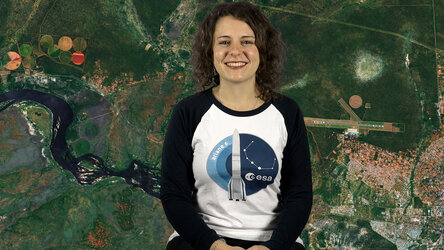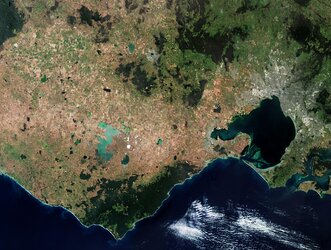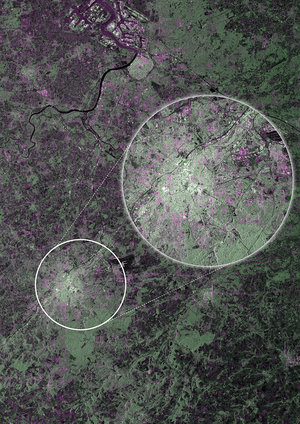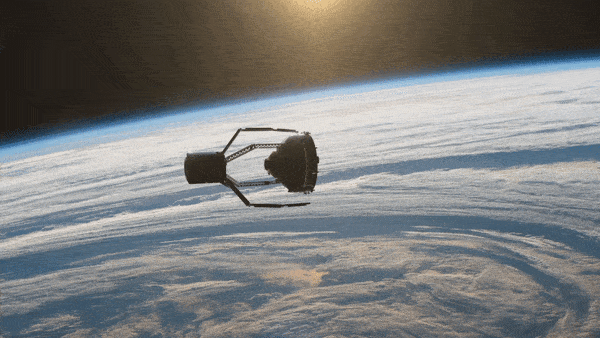Accept all cookies Accept only essential cookies See our Cookie Notice

About ESA
The European Space Agency (ESA) is Europe’s gateway to space. Its mission is to shape the development of Europe’s space capability and ensure that investment in space continues to deliver benefits to the citizens of Europe and the world.
Highlights
ESA - United space in Europe
This is ESA ESA facts Member States & Cooperating States Funding Director General Top management For Member State Delegations European vision European Space Policy ESA & EU Responsibility & Sustainability Annual Report Calendar of meetings Corporate newsEstablishments & sites
ESA Headquarters ESA ESTEC ESA ESOC ESA ESRIN ESA EAC ESA ESAC Europe's Spaceport ESA ESEC ESA ECSAT Brussels Office Washington OfficeWorking with ESA
Business with ESA ESA Commercialisation Gateway Law at ESA Careers Cyber resilience at ESA IT at ESA Newsroom Partnerships Merchandising Licence Education Open Space Innovation Platform Integrity and Reporting Administrative Tribunal Health and SafetyMore about ESA
History ESA Historical Archives Exhibitions Publications Art & Culture ESA Merchandise Kids Diversity ESA Brand Centre ESA ChampionsLatest
Space in Member States
Find out more about space activities in our 22 Member States, and understand how ESA works together with their national agencies, institutions and organisations.
Science & Exploration
Exploring our Solar System and unlocking the secrets of the Universe
Go to topicAstronauts
Missions
Juice Euclid Webb Solar Orbiter BepiColombo Gaia ExoMars Cheops Exoplanet missions More missionsActivities
International Space Station Orion service module Gateway Concordia Caves & Pangaea BenefitsLatest
Space Safety
Protecting life and infrastructure on Earth and in orbit
Go to topicAsteroids
Asteroids and Planetary Defence Asteroid danger explained Flyeye telescope: asteroid detection Hera mission: asteroid deflection Near-Earth Object Coordination CentreSpace junk
About space debris Space debris by the numbers Space Environment Report In space refuelling, refurbishing and removingSafety from space
Clean Space ecodesign Zero Debris Technologies Space for Earth Supporting Sustainable DevelopmentLatest
Applications
Using space to benefit citizens and meet future challenges on Earth
Go to topicObserving the Earth
Observing the Earth Future EO Copernicus Meteorology Space for our climate Satellite missionsCommercialisation
ESA Commercialisation Gateway Open Space Innovation Platform Business Incubation ESA Space SolutionsLatest
Enabling & Support
Making space accessible and developing the technologies for the future
Go to topicBuilding missions
Space Engineering and Technology Test centre Laboratories Concurrent Design Facility Preparing for the future Shaping the Future Discovery and Preparation Advanced Concepts TeamSpace transportation
Space Transportation Ariane Vega Space Rider Future space transportation Boost! Europe's Spaceport Launches from Europe's Spaceport from 2012Latest

Victoria Falls
Thank you for liking
You have already liked this page, you can only like it once!
The Copernicus Sentinel-2 mission takes us over Victoria Falls – one of the world’s greatest natural wonders.
Victoria Falls, known locally as Mosi-oa Tunya or ‘the smoke that thunders,’ lies along the course of the Zambezi River, on the border between Zambia to the north and Zimbabwe to the south. The Zambezi River flows for around 3500 km from its source on the Central African Plateau and empties into the Indian Ocean.
In this image, captured on 22 February 2019, the river cuts from left to right in the image before plunging over Victoria Falls – visible as a white line in the image. While it is neither the highest nor the widest waterfall in the world, Victoria Falls has a width of around 1700 m and a height of over 100 m which classifies it as the world’s largest sheet of falling water.
The spray from the falls normally rises to a height of over 400 m and is sometimes visible from up to 40 km away. The water from the Zambezi River then continues and enters a narrow, zigzagging series of gorges, visible in the bottom right of the image.
Despite recent reports of Victoria Falls drying up, the Zambezi River is subject to large seasonal fluctuations – with water levels rising and dropping dramatically throughout the year. According to the Zambezi River Authority, the lowest recorded water flows recorded were during the 1995—96 season, which had an annual mean flow of around 390 cubic metres per second, compared to the long-term mean annual flow of around 1100 cubic metres per second.
The town of Victoria Falls, in Zimbabwe, can be seen west of the falls, while the town of Livingstone – named after the famous Scottish explorer – is visible just north of the falls, in Zambia. The Harry Mwanga Nkumbula airport can be seen west of the town.
The circular shapes in the image are an example of an irrigation method called pivot irrigation or centre-pivot irrigation, where equipment rotates around a central pivot and crops are watered with sprinklers.
Sentinel-2 is a two-satellite mission to supply the coverage and data delivery needed for Europe’s Copernicus programme. The mission’s frequent revisits over the same area and high spatial resolution allow changes in inland water bodies to be closely monitored.
This image is also featured on the Earth from Space video programme.
-
CREDIT
contains modified Copernicus Sentinel data (2019), processed by ESA -
LICENCE
ESA Standard Licence and Additional permission may be required
(contact spaceinimages@esa.int for further information)

Earth from Space: Victoria Falls

Earth from Space: Victoria, Australia

Sentinel Island

Pine Island and Thwaites Glaciers from Sentinel-1A















 Germany
Germany
 Austria
Austria
 Belgium
Belgium
 Denmark
Denmark
 Spain
Spain
 Estonia
Estonia
 Finland
Finland
 France
France
 Greece
Greece
 Hungary
Hungary
 Ireland
Ireland
 Italy
Italy
 Luxembourg
Luxembourg
 Norway
Norway
 The Netherlands
The Netherlands
 Poland
Poland
 Portugal
Portugal
 Czechia
Czechia
 Romania
Romania
 United Kingdom
United Kingdom
 Sweden
Sweden
 Switzerland
Switzerland
























